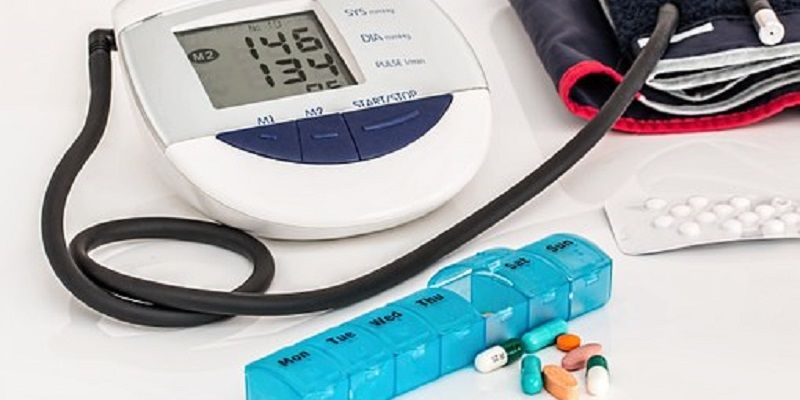
Researchers may have discovered why some people experience muscle pain after taking statins.
It could help doctors prevent a known side effect of statins and ensure people are able to reap the benefits of the life-saving drugs.
"...after twenty years of searching, we finally have an explanation for statin-associated muscle pain, along with a possible solution."
Dr Sarah Calaghan, University of Leeds
According to the research, statins cause spontaneous and irregular leaks of calcium from storage compartments within muscle cells. Under normal conditions, coordinated releases of calcium from these stores make the muscles contract. Unregulated calcium leaks may cause damage to muscle cells, potentially leading to muscle pain and weakness.
The researchers suggest that in most people, muscle cells can tolerate this calcium leak. However, in people already susceptible due to their genes or lifestyle, the leak caused by statins may overwhelm the muscle cells, giving rise to muscle pain and weakness.
The findings explain why only some people experience muscle pain after taking statins and could help doctors to identify those most likely to experience symptoms so they can be offered alternative therapies.
The researchers also showed that moderate exercise may prevent the changes which lead to calcium leaks from occurring, and it may be an effective way for people taking statins to avoid muscle symptoms.
The findings, by scientists from the University and the Karolinska Institute in Sweden, are published in the journal JACC: Basic to Translational Science.
Moderate exercise helps
Dr Sarah Calaghan, Associate Professor of Cardiac Physiology at the Faculty of Biological Sciences at Leeds said: “The idea that exercise makes statin side effects worse might be a misconception - what really matters is the intensity of exercise.
“We found that moderate exercise cancelled out the changes in muscle cells caused by statins. We know around 7 in 10 professional athletes can’t tolerate statins – and we know that intense endurance exercise has profound effects on the gatekeeper proteins targeted by statins. The added effect of statins could push muscles over the edge, leading to symptoms.
“The good news is, after twenty years of searching, we finally have an explanation for statin-associated muscle pain, along with a possible solution. If you weren’t convinced to exercise already, here’s another reason.”
Statins reduce a person's risk of a heart attack or stroke by lowering the levels of so-called ‘bad cholesterol’ in the body. They are particularly beneficial for people who have already had a heart attack or stroke and are also effective in those who are identified as being at risk of having one in future. Although side effects are rare, muscle pain and weakness are important reasons why some people stop taking these potentially life-saving drugs.
The research team investigated the effects of statins on muscle biopsies from patients taking statins long term and from rats treated with statins for 4 weeks.
Treatment with statins compromised gatekeeper proteins called ryanodine receptors, which control calcium release from storage compartments in muscle cells, leading to spontaneous and irregular calcium leaks that could trigger signals promoting cell death.
Despite the cell changes, statins did not affect muscle function or strength in rats. These findings support the theory that muscle cells can tolerate the calcium leak, meaning only those who are susceptible experience symptoms.
Importantly, the study also suggests that the potentially harmful effects of statins on muscle can be countered with exercise. When rats were given free access to an exercise wheel, the statin-related changes to the gatekeeper proteins no longer occurred and pro-cell death signals were not elevated in the muscles. In fact, rats treated with statins ran twice as far as control rats. The findings challenge previous reports that exercise makes statin side effects worse.
Statins are 'life saving drugs'
The researchers point out that they did not directly show that the cell changes lead to muscle weakness and pain in people, but note that this is likely. The proposed mechanism may also explain why heart muscle, which has different gatekeeper proteins for calcium release, is protected from any potentially harmful effects of statins.
Professor Metin Avkiran, Associate Medical Director at the British Heart Foundation, which funded the research, said:
“Statins are life-saving drugs and most people who take them don’t experience side effects. Those who do suffer muscle pain and weakness should always ask their doctor if a different statin or dose might solve the problem.
“Identifying how statins affect muscle cell biology is the first step in preventing potential muscle side effects – and ensuring that people who are susceptible to those side effects do not miss out on the protection afforded by statins.
“Ultimately, everyone has control over the medications they choose to take. When weighing up whether to take statins, talk to your GP. After assessing your personal risk and advising on lifestyle changes, they will help you make an informed decision that is right for you.”
For media enquiries email the University of Leeds Press Office at pressoffice@leeds.ac.uk.